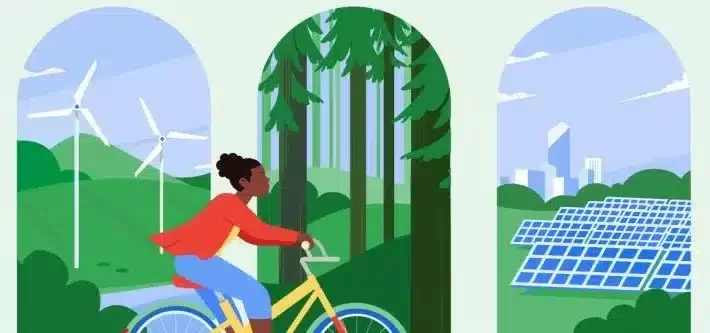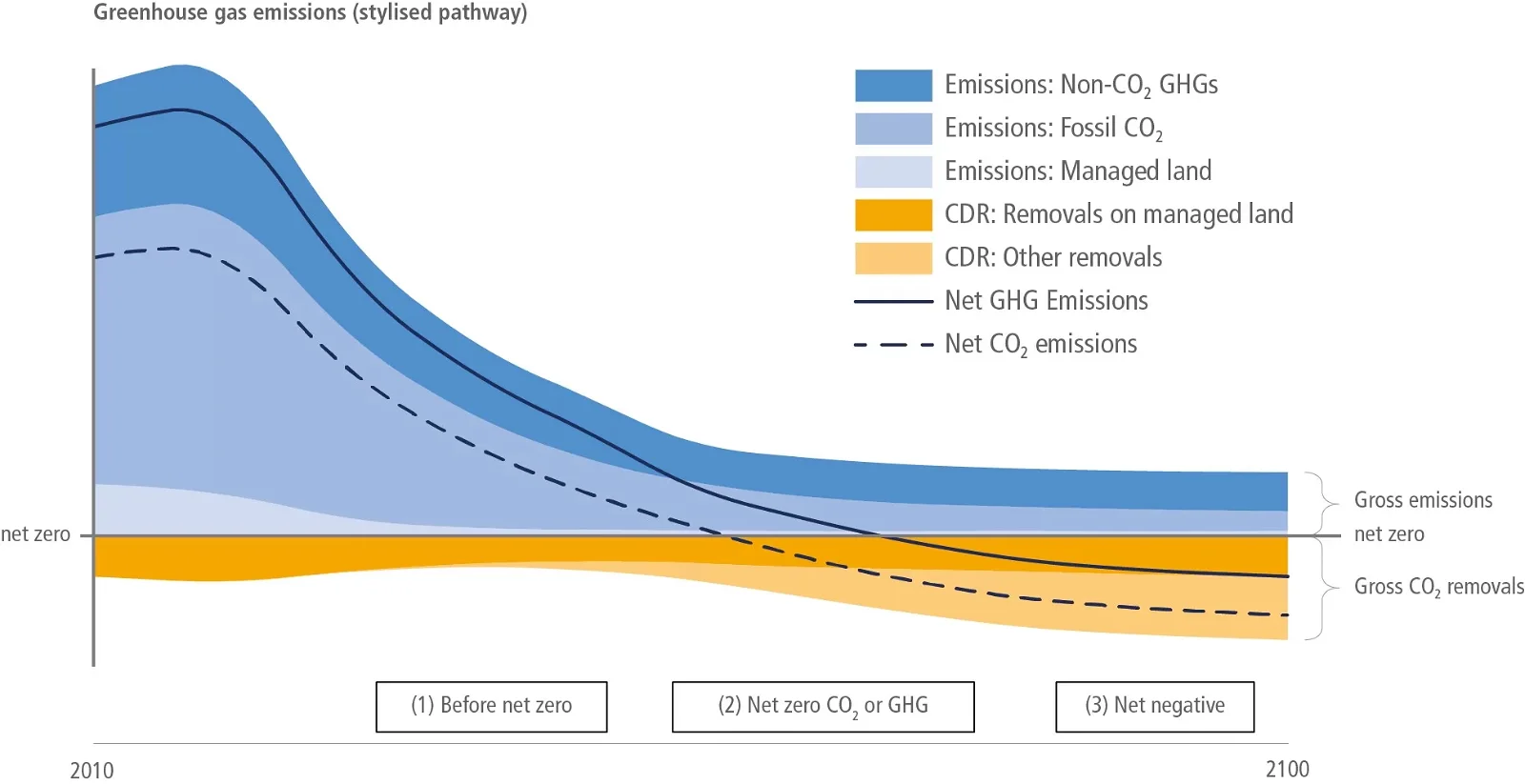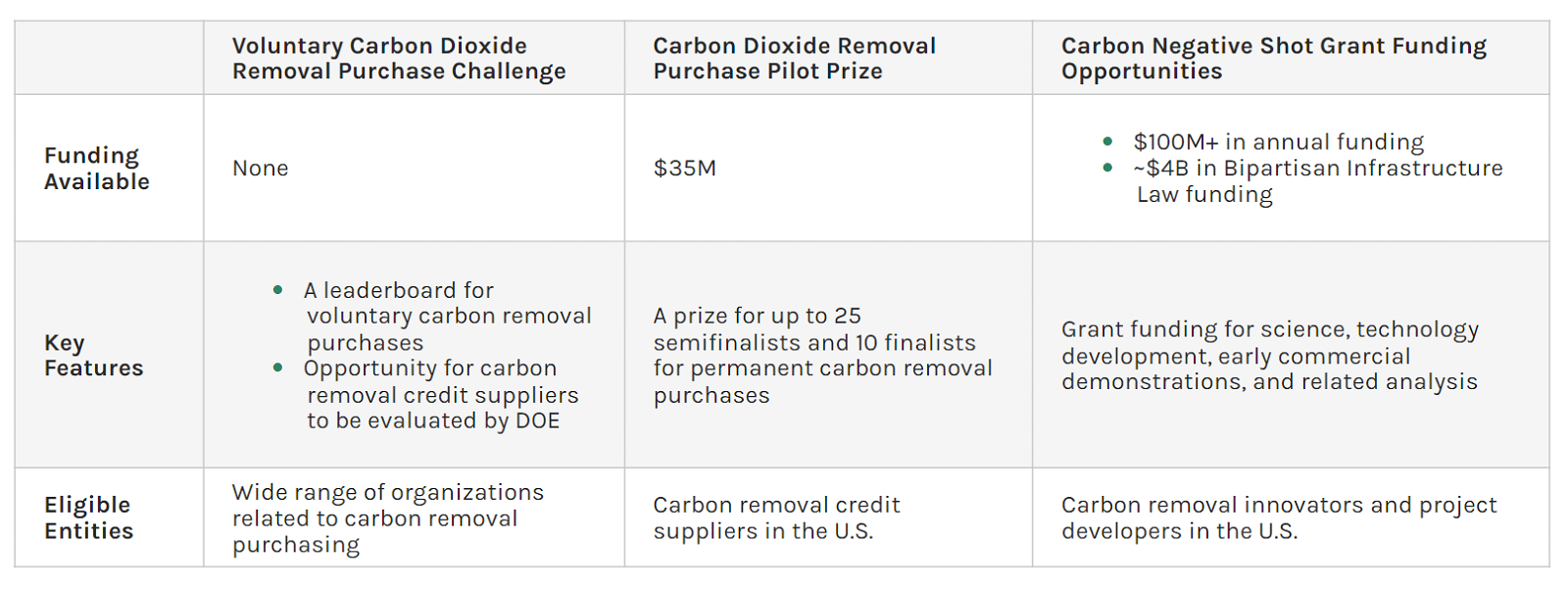Amidst escalating climate change concerns, the Department of Energy (DOE) is spearheading initiatives to accelerate the deployment of carbon dioxide removal technologies.
For the first time, the Department is purchasing $35 million in carbon removal credits through its Carbon Dioxide Removal Purchase program and Google is the first company to answer the call, matching DOE’s $35 million commitment.
Carbon Clearinghouse: DOE’s Bold Move
The Intergovernmental Panel on Climate Change’s (IPCC) report suggested that scenarios that limit warming to 1.5°C include scaling carbon dioxide removal methods to billions of tons of removal annually over the coming decades. However, the report also highlighted that most existing removal solutions are in their early stages and currently limited in scale.
To help scale the industry, the Department of Energy (DOE) launched the Carbon Negative Shot in 2021. This initiative aims to support innovation in different CO2 removal pathways. These include Direct Air Capture (DAC), soil carbon sequestration, ocean-based CO2 removal, and reforestation, among others.
The direct air capture sector witnessed notable advancements recently. These include recent CarbonCapture’s successful raise of $80 million in Series A funding and Climeworks unveiling its US headquarters in Austin, Texas.
The Department’s goal is to enable carbon capture and storage at gigaton scales for less than $100 per net metric ton of CO2e by 2032. In September 2023, the DOE announced the Carbon Dioxide Removal Purchase Pilot Prize. This effort makes $35 million in funding available to purchase carbon removal credits to support commercial carbon dioxide removal companies.
Companies and collectives have invested billions in carbon removal, benefiting the industry significantly. This trend highlights the importance of integrating carbon removal into climate strategies, serving as a backup for residual emissions.
As more organizations commit to net zero targets, carbon removal becomes crucial. With technological advancements, carbon removal projects are more accessible and verifiable.
However, future supply limitations may pose challenges for late adopters. And this major challenge remains: how to encourage more organizations to start buying voluntary carbon removal credits.
DOE’s Campaign Fuels Carbon Capture
Expanding the investment to other companies and organizations, the DOE announced the Voluntary Carbon Dioxide Removal Purchasing Challenge. This initiative calls on organizations to make public larger and bolder purchase commitments similar to the DOE’s $35 million carbon removal purchase pilot.
But unlike the Pilot Prize, the Challenge does not entail additional federal funds.
As part of the challenge, the DOE will create a public leaderboard recognizing buyers and tracking voluntary carbon removal purchases. It addresses non-financial barriers such as market transparency and recognition of the importance of carbon removal credits. Thus, the Challenge seeks to foster greater participation in carbon removal efforts.
How the Challenge Fits into DOE Carbon Removal Programs
The DOE is providing supporting materials for buyers to make larger carbon removal purchases while assisting CDR credit suppliers in finding more customers.
Additionally, the DOE has been actively involved in establishing DAC hubs in Texas and Louisiana. The Texas DAC Hub is spearheaded by Occidental subsidiary 1PointFive in collaboration with partners Worley and Carbon Engineering. Meanwhile, the Louisiana project, named Project Cypress, is led by the non-profit organization Battelle, alongside technology developers Climeworks and Heirloom.
Google Leads the Charge
Google is the first company to join the DOE’s challenge, matching the Department’s $35 million commitment.
Through its initiatives, Google intends to contract for at least $35 million worth of carbon removal credits over the next 12 months.
This model of mutually reinforcing public-private support is a crucial tool for commercializing carbon removal solutions. Like many emerging technologies, governments and companies have essential and complementary roles in demonstrating promising carbon removal approaches and scaling them commercially.
Randy Spock, Google’s Carbon Credits and Removals Lead, noted that:
“We’re working hard to reduce our own emissions across our operations and value chain, but we know that tackling global climate change will require a diverse set of tools to both reduce emissions and remove them from the atmosphere.”
Spock further highlighted that deploying CDR to address hard-to-abate residual emissions is critical to achieving net zero emissions.
This CDR effort builds on Google’s recent purchases through Frontier, a pioneer advance market commitment to scale breakthrough CDR approaches. The tech giant is also a part of the First Movers Coalition, a global initiative of companies collaborating to signal demand for emerging climate technologies.
Google’s decision to join the challenge and commit to purchasing carbon removal credits in advance has sparked anticipation that other tech giants may do the same. Companies like Amazon and Microsoft have already been actively purchasing such carbon credits directly from issuing companies throughout 2023.
The Department of Energy plans to highlight similar announcements going forward, hoping “to unlock game-changing capital for high-quality and affordable CDR in time to meet our climate goals.”



